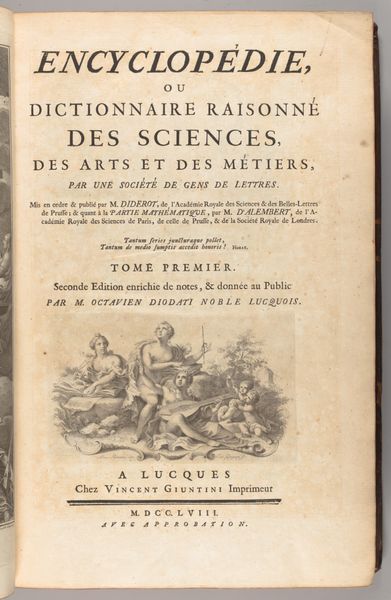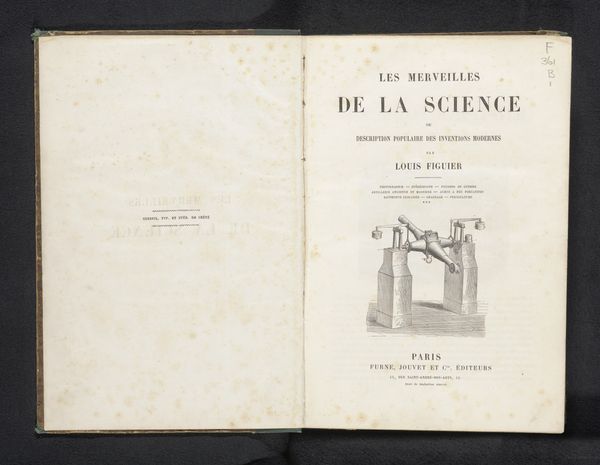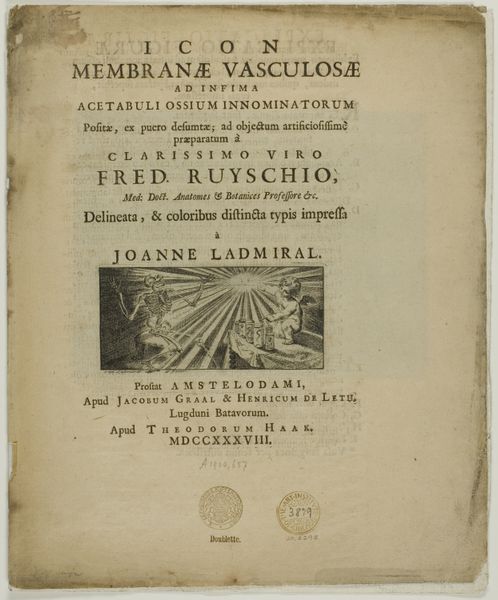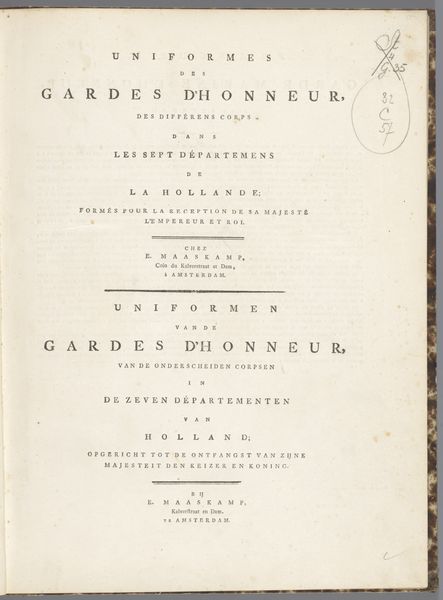
Planches pour l'Encyclopédie, ou pour le Dictionaire raisonné des sciences, des arts libéraux, et des arts méchaniques, avec leur explication 1765 - 1776
0:00
0:00
Dimensions: 11 volumes, illustrations, height: 16 9/16 in. (42 cm)
Copyright: Public Domain
This title page of Diderot’s “Encyclopédie,” published in 1765, employs potent symbols, reflecting its mission to disseminate knowledge. Note the ornate vase of flowers—a classical motif symbolizing flourishing, abundance, and the revival of arts and sciences. Consider how similar floral arrangements appear in Roman frescoes, signifying peace and prosperity. This iconography transcends time; during the Renaissance, we see the vase motif reborn in paintings celebrating intellectual and cultural rebirth. Over time it has shifted from pagan celebration to secular and religious symbolic use. The vase engages the viewer through a kind of collective memory, subtly suggesting the cyclical nature of knowledge and culture. The very act of compiling an encyclopaedia, a storehouse of human knowledge, mimics this pattern of cultural memory. The viewer, subconsciously drawn to the beauty and symbolism of the vase, is thus prepared to receive the knowledge contained within. Thus, the encyclopedia embodies a powerful force engaging viewers on a deep, subconscious level.
Comments
No comments
Be the first to comment and join the conversation on the ultimate creative platform.













